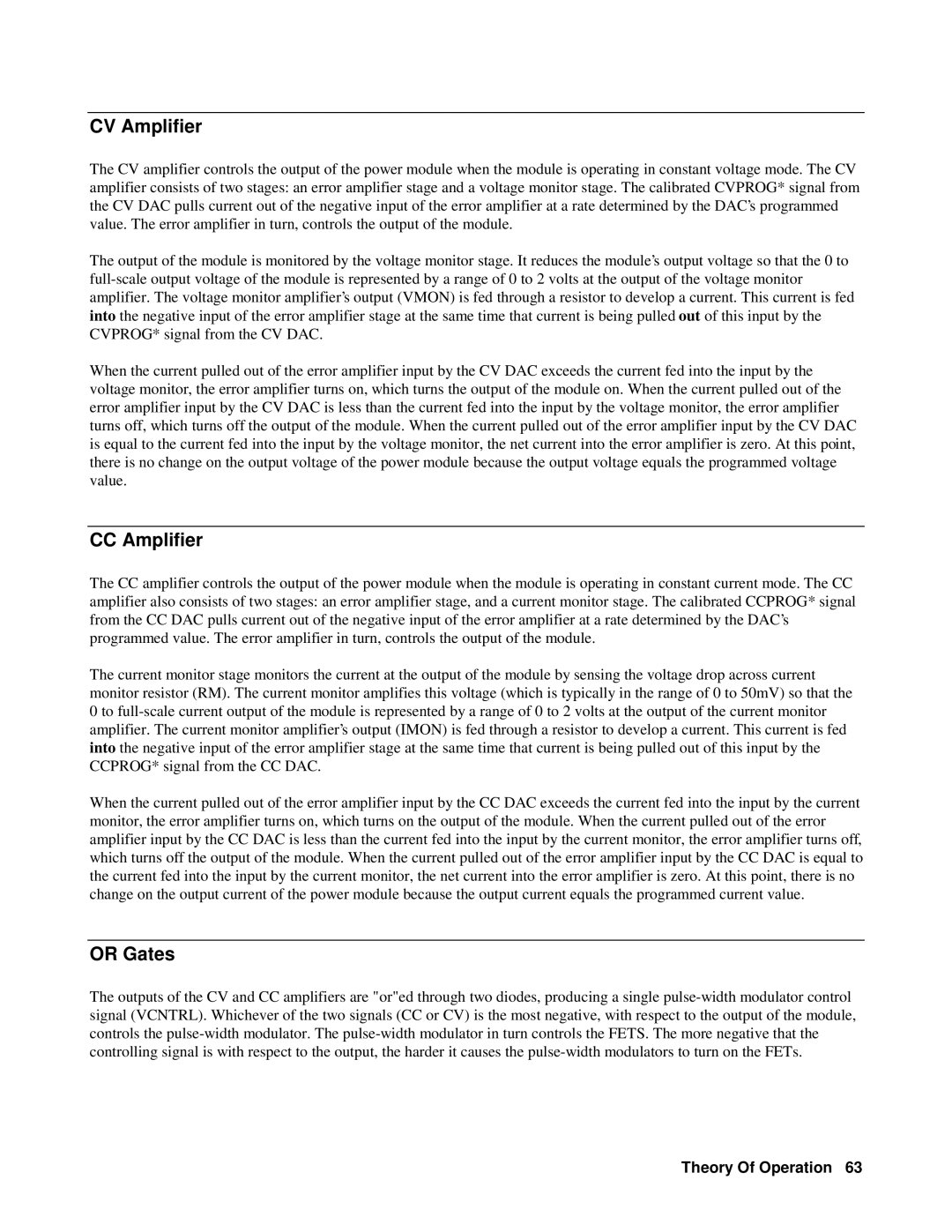6610XA specifications
Agilent Technologies has long been recognized for its innovative contributions to the fields of measurement and testing, and the Agilent 6610XA series of power supplies is no exception. Tailored for demanding applications in electronics and advanced research, the 6610XA series exemplifies cutting-edge technology blended with user-friendly features.One of the main characteristics of the Agilent 6610XA is its ability to provide a stable, accurate, and reliable power supply across a range of applications. With output voltages that can reach as high as 60V and currents up to 10A, the device is versatile enough to cater to a variety of testing requirements. This power supply is ideal for applications including semiconductor testing, device characterization, and more, where precision and consistency are paramount.
Among the standout features of the Agilent 6610XA is its advanced graphical user interface (GUI), which enhances the overall user experience. The intuitive design allows engineers and technicians to monitor and control voltage and current settings easily, making the process of configuring the device both fast and efficient. Additionally, the device has built-in measurement capabilities that can display real-time voltage and current readings, significantly aiding in troubleshooting and performance evaluation.
Furthermore, the 6610XA incorporates a range of communication interfaces including USB, LAN, and GPIB, making it highly adaptable for integration into various automated test setups. This versatility signifies that the power supply can be seamlessly incorporated into existing laboratory environments, promoting productivity and efficiency.
The series also incorporates intelligent protection mechanisms to ensure both user safety and equipment longevity. Features such as overvoltage protection (OVP) and overcurrent protection (OCP) are designed to prevent accidental overloads, safeguarding both the device under test and the power supply itself.
Another key aspect is the series' capability to perform complex programming tasks with ease. With programming capabilities that enable users to set intricate voltage and current profiles, the device supports advanced applications, including load transient testing and sweep testing. This flexibility makes the Agilent 6610XA a valuable asset for any research and development environment looking to enhance testing efficiency and accuracy.
In conclusion, the Agilent 6610XA series power supply stands out for its combination of precision, user-friendliness, advanced communication capabilities, and safety features. These attributes make it a critical tool for engineers and researchers engaged in the rigorous demands of modern electronics testing and evaluation. With its continued commitment to innovation, Agilent Technologies reinforces its position as a leader in providing high-quality solutions for the measurement and testing industry.

